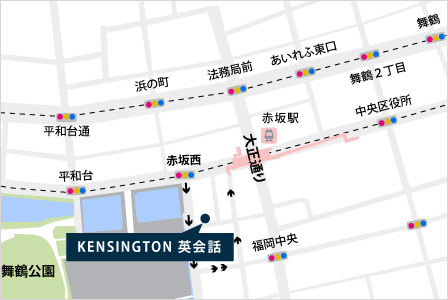Study Advice / How to make most of your lessons
Full sentences
Hey guys,
Something that can be a struggle for students, especially beginners, can be making full sentences. Here is an example:
Liam: “What did you do yesterday?”
Student: “I went to the cinema”
Liam: “Who did you go with?”
Student: “My daughter.”
This is actually an ok and fairly common thing to do. Like with Japanese, we can omit things that are obvious. But we encourage students to try and use full sentences when learning, as it is better for learning the language. Of course, it’s not a problem to do sometimes, but if you notice it becoming a habit, it’s a good thing to try and snap out of.
A simple tip is to remember to start with the subject, followed by the verb. Here is the same example again:
Liam: “What did you do yesterday?”
Student: “I went to the cinema”
Liam: “Who did you go with?”
Student: “I went with my daughter.”
I hope that helps.
Liam
学習アドバイス / 最大限にレッスンを活かす
省略せずに文章を作る
こんにちは
皆さんを、特に初心者の方を苦戦させる事として、省略せずに文章を作ることがあります。
例えば
Liam: “What did you do yesterday?”
(昨日何をしていましたか?)
Student: “I went to the cinema”
(映画に行きました。)
Liam: “Who did you go with?”
(誰と一緒に行きましたか?)
Student: “My daughter.”
(娘です)
実際にはこれでも大丈夫ですし、かなりよくあることです。
日本人同士なら、文の一部を省略しても意味が通じます。
しかし、学習中の生徒さんがより良く言語を学ぶためには、省略せずに文章を作ることをおススメします。
もちろん時々は問題ありません、でももし、それが癖になってしまっていると気づいたら、そこから切り替えてみるのはとても良いことです。
簡単なヒントとして、「最初に主語、その後に動詞を続ける」と覚えて下さい。
先ほどの例をもう一度。
Liam: “What did you do yesterday?”
(昨日何をしていましたか?)
Student: “I went to the cinema”
(映画に行きました。)
Liam: “Who did you go with?”
(誰と一緒に行きましたか?)
Student: “I went with my daughter.”
(娘と一緒に行きました。)
皆さんのお役に立てば嬉しいです。
リアム
~*~*~*~ \ Follow me / ~*~*~*~
Instagram : @kensington_eikaiwa
Twitter : @Kensington_Eng
Facebook : @kensingtoneikaiwa
YouTube : KENSINGTON英会話
~*~*~*~*~*~*~*~*~*~*~*~*~*
◆お問い合わせはこちら
ケンジントン英会話:お問い合わせフォーム

































